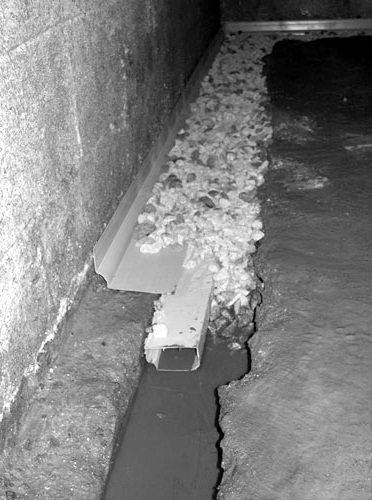What are, residential drainage systems? They remove excess water from around the home. This type of system helps whisk water away from walkways, driveways and roofs to avoid flooding.
An example of residential water drainage system
Types of Residential Drainage Systems
There are four main types of residential drainage systems: surface, subsurface, slope, downspout and gutters.
Surface Drainage System
For surface drainage to be successful, ditches must be dug in a parallel pattern. The ditches are shallow and will act as canals for run-off water. The ditches will lead the water into the main drain or away from the home to avoid water pooling or flooding. Surface drains are an absolute must if the area is flat since water pooling could potentially cause problems in an area that has a lot of precipitation. This can be done around buildings, walkways or driveways to keep water flowing away from the structure.
Subsurface Drainage System
The general idea behind subsurface drains is that they are placed beneath the top layer of soil. This removes excess water from soil at the root level that has become water logged. If roots sit in water too long, they will begin to deteriorate and eventually the plant or tree will perish from too much water. The process to install subsurface drains requires digging deep ditches and installing pipes underground. A large collector drain must also be installed so the water can be collected from the pipes. In most areas, a sump pump will also be required in order to push the water through the pipes. These can cause disruptions in the soil and the natural aeration of the soil as well as plant respiration. This is also known as the French drain.
Downspout and Gutter System
The downspout is connected to the gutter system on a building or home and carries water away from the roof down to the ground. The shape of the downspout pipes can be round or rectangular and are comprised of copper, aluminum or steel. The purpose of the downspout is to catch the water from the gutters and divert it to the ground. Most downspouts will empty out on a slope so the water will not pool at the base of the downspout.
Slope Drainage System
Slope drains allow water to generally take its natural course away from the structure and with the aid of pipes moving down a slope. A pipe is installed and then anchored into a small incline where the water will follow gravity through the pipe and away from the structure. The pipe can be metal plastic, steel or concrete and will be covered with a sturdy grate to keep people and animals from falling into it.
Residential drainage systems are a requirement for any home or building as it will prevent flooding, rot, mold, mildew and structural damage from too much water. Usually drainage issues can be spotted and then easily remedied. Even if water has not pooled or flooding occurs there could still be a slow leak that will cause extensive damage. The general rule is that all homes should have a gutter and downspout system in place. If additional drainage systems need to be added, then research each one and pick the best option for the home. If necessary, consult a local, professional drainage expert before installing or having a system installed.
